
“Insect Diversity” by Pål Hermansen (Norway). Insects and Overall Winner of Close-up Photographer of the Year 03
Photographers from 56 countries entered their unique perspectives of the world into the Close-up Photographer of the Year contest. Over 9,000 images were submitted to the competition, which is in its third year, and Norwegian photographer Pål Hermansen was named the overall winner for his fascinating photo of insects laid on a table.
The photo, which also won the Insects category, was something that happened practically by accident. “In the autumn of 2020, I discovered that one of the lamps on my house in Norway had a defect and had acted as a light trap for insects,” Hermansen shares. “I emptied the lamp and spread the contents onto a large light table I had leftover from my slide days. I used a weak flashlight to light the details from above. I wanted to express the chaos and diversity of this discovery, but also to find some kind of composition. To me, it’s a visual reminder of the important and extreme diversity of animals around us that we take for granted.”
Other winning photographs across the contest’s nine categories have equally fascinating backstories. This includes Irish photographer Daragh Muldowney traveling all the way to Siberia’s Lake Baikal to take his image of a crack in the ice, which won the Intimate Landscape category. Rachel McNulty stayed close to home for her winning photo in the Manmade category. The British accountant used her time during the 2020 lockdown to explore abstract photography using a gin bottle, natural light, and a macro lens.
“The standard was incredible,” shares contest co-founder Tracy Calder. “Yet again, entrants have shown that close-up photography can help us see the world anew and discover beauty in subjects that are often overlooked.” For his win, Hermansen takes home £2,500 (approximately $3,440). His photo, as well as images from the top 100 finalists, are available to view online.
See more incredible winning entries from the 2021 Close-up Photographer of the Year Contest.
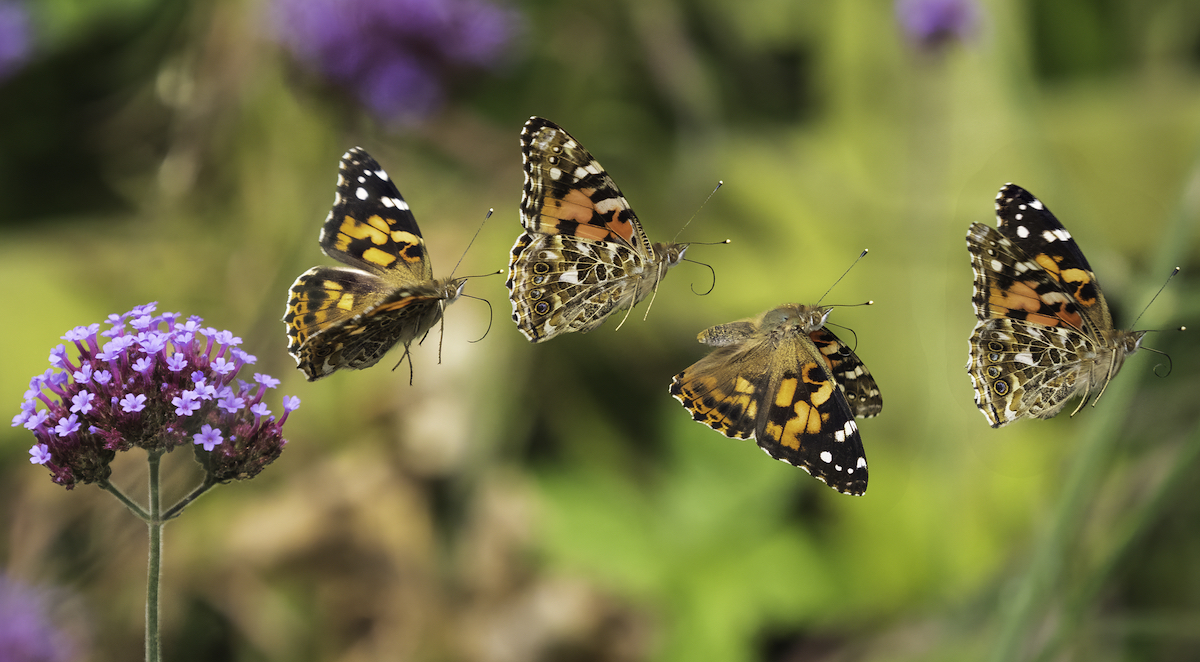
“Painted Lady in the Garden” by Andrew Fusek Peters (UK). Butterflies & Dragonflies, Second Place.
“I had just had my cancer diagnosis in the autumn of 2019. I was waiting for surgery and could not go far so spent a lot of time in our garden. It was a wonderful late summer and lots of butterflies came to nectar on my wife’s flowers, including Verbena bonariensis. I had just started shooting with the Olympus camera system and began to wonder if it might be possible to photograph butterflies in flight. Sports action sequences were my inspiration. If I got a set of shots at 60 frames per second, with the butterfly taking off in the plane of focus, set at the first shot, I thought they might make up an action sequence, a sort of time-lapse in a single frame to show motion but also movement through a fraction of a second.
This was my first decent sequence, with four good Raw files from the moment the painted lady took off until it left the frame. The photos were layer masked in Photoshop to produce this composite. The result inspired me to really develop my butterfly in flight shots but this was the beginning point, a close up wonder revealing the painted lady in all its aerial glory.”

“Holly Parachute” by Barry Webb (UK). Plants & Fungi, Winner.
“Last December, while cutting the hedge in my garden, I spotted what I thought were slime moulds, growing on this dead holly leaf. On closer inspection, I noticed amazing spikes coming out of the cap of these small, rare, Holly Parachute fungi, Marasmius hudsonii. I took the holly leaf into my greenhouse, out of the wind, and then spent some time carefully arranging moss behind, to create a pleasant background. I deliberately chose a composition using the pointed edges of the holly leaf as a frame and to echo the spikes of the little fungi. This is a 42 shot focus stack, combined in Zerene Stacker.”

“Rat in Tyre Hub” by Ezra Boulton, 16, (UK). Young, Winner.
“I noticed this rat peering out of an abandoned car wheel in a farmyard near my home in Cornwall, England. It was framed so pleasingly by the concentric circles of the tire that I came back the next morning with my camera in the hope of capturing the moment. I like how the rat’s beady eyes echo the holes in the tire.”
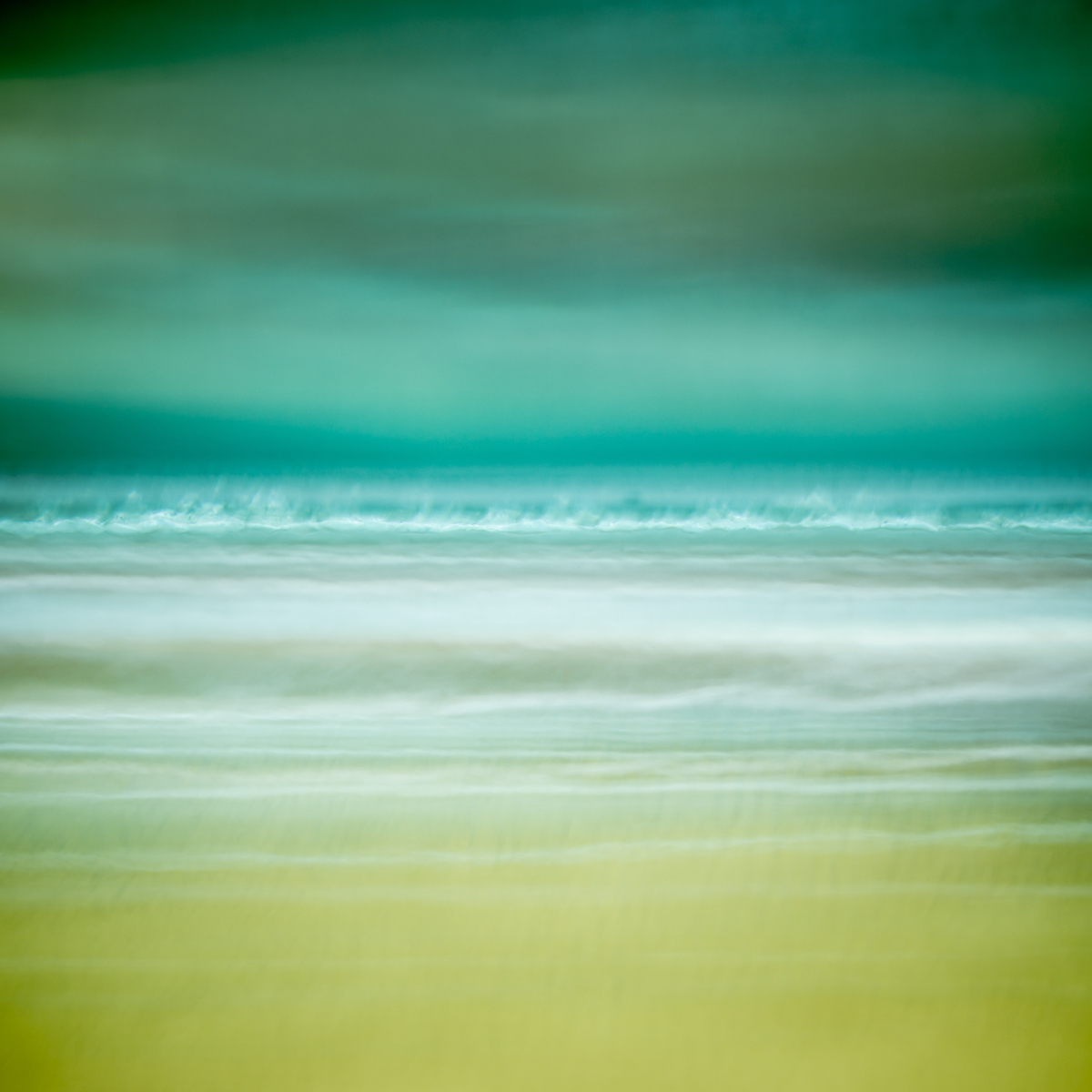
“Waves Crashing” by Rachel McNulty (UK). Manmade, Winner.
“At the start of lockdown last year (2020) I embarked on a home-based project to create abstract seascapes using colorful glass bottles, a macro lens, and natural daylight. This was all done from my dining room table, with the sunlight enhancing the colors and casting incredible reflections within the bottles. When I looked through the viewfinder I suddenly saw waves crashing on a beach, storm clouds out to sea, or dramatic sunsets. No two images will ever be the same, the light changes, the position of the bottle moves, the reflections shift just like a real seascape constantly alters.
This image was created from a close-up section of a turquoise blue gin bottle to create the stormy sky and sea. The light reflecting off the bottle appears as waves crashing on a beach and a small foil reflector was used to enhance the yellow sand.”
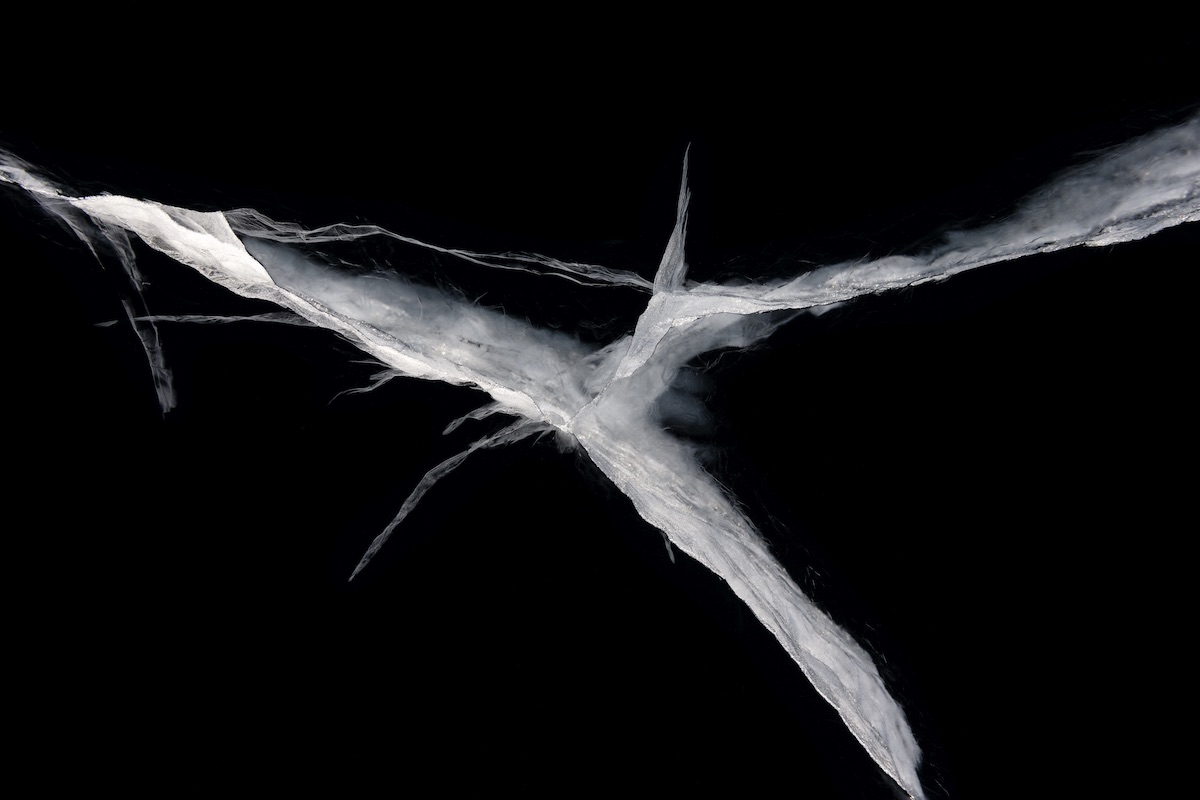
“Juncture Y” by Daragh Muldowney (Ireland). Intimate Landscape, Winner.
“This was shot on Lake Baikal in Siberia in February 2019 as part of my most recent collection Beacons. I have had a fascination with ice for many years now and this led me to explore Lake Baikal. I am inspired by form and composition in nature – beautiful lines, textures, or shapes that become a work of art when you look closely or compose in a particular way. I love the intersecting lines in this small feathery crack in the ice. I processed this in a way to help the detail of this exquisite crack to stand out from the depths below.”
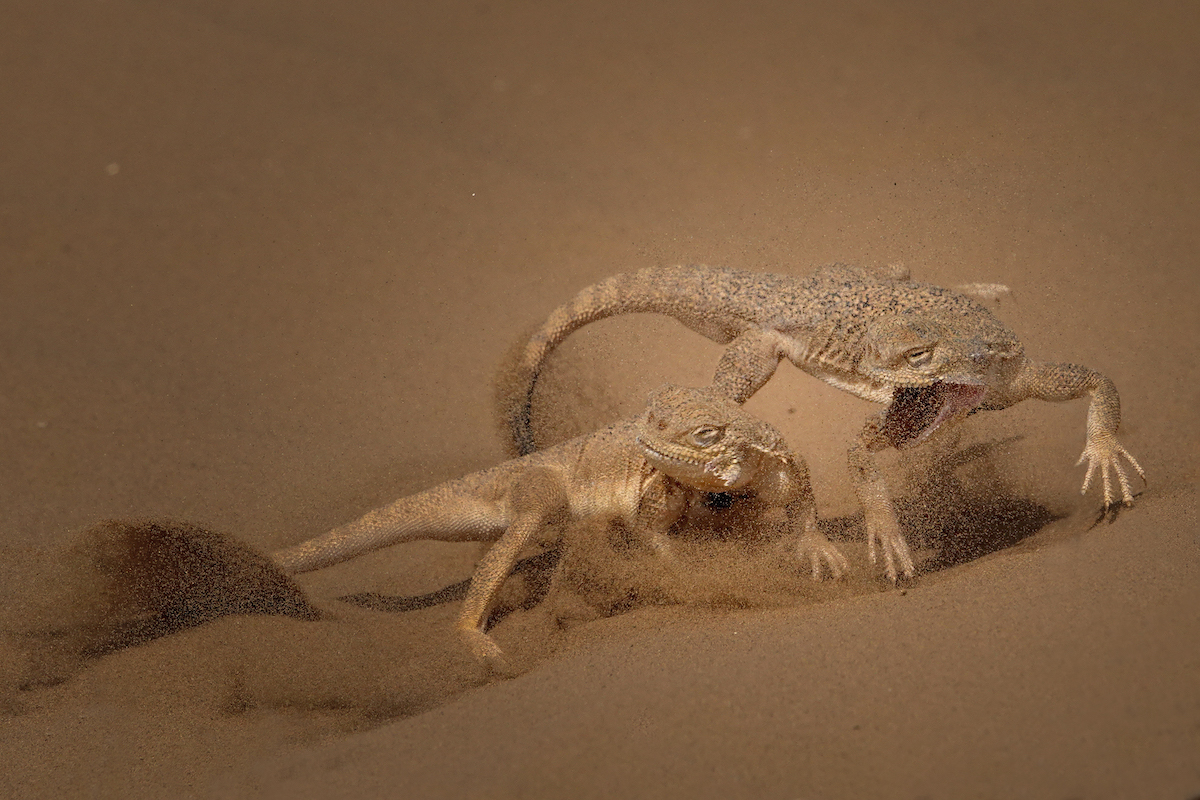
“Fight” by Svetlana Ivavnenko (Russia). Animals, Second Place.
“During spring these Secret toadhead agamas battle over territory. It is difficult to capture these short and intense conflicts. The temperature in Kalmykia, Russia doesn’t help either, as it often rises above 30°C.”
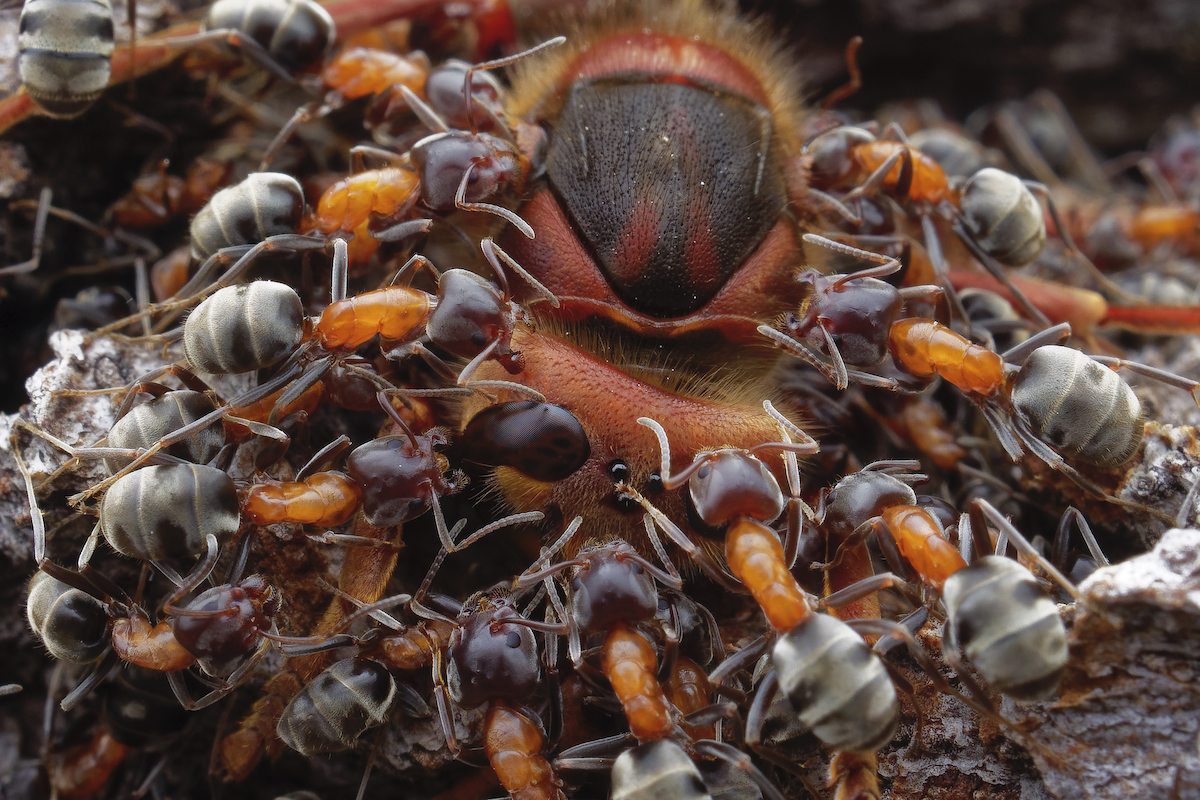
“Ants and Hornet” by Petr Bambousek (Czech Republic). Insects, Second Place.
“Liometopum ants live in large colonies on huge trees and feed on many different types of food. In the picture, you can see how the group of ants work together in hunting the hornet. I used a single diffused flash to light the scene and slightly cropped the image to take the viewer into the heart of the action. This interesting behavior was discovered during a night walk in the extensive park of Lednice Castle, Czech Republic.”
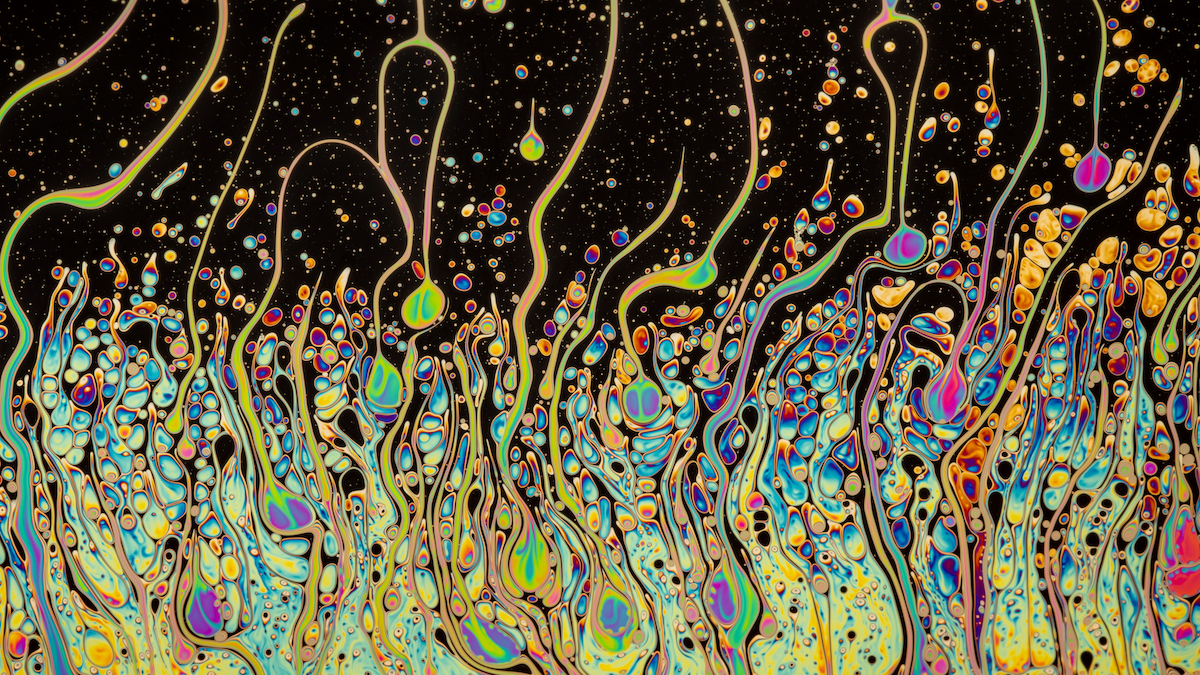
“Delusion” by Bruno Militelli (Brazil). Manmade, Second Place.
“A soap bubble lasts mere seconds before it bursts and returns to its original form. This image seeks not only to portray the ephemeral life of an apparent common physical phenomenon but to also show the most diverse colors and mesmerizing patterns. The psychedelic effect contained in the movement of water and soap captured against the light continually feeds my imagination.”
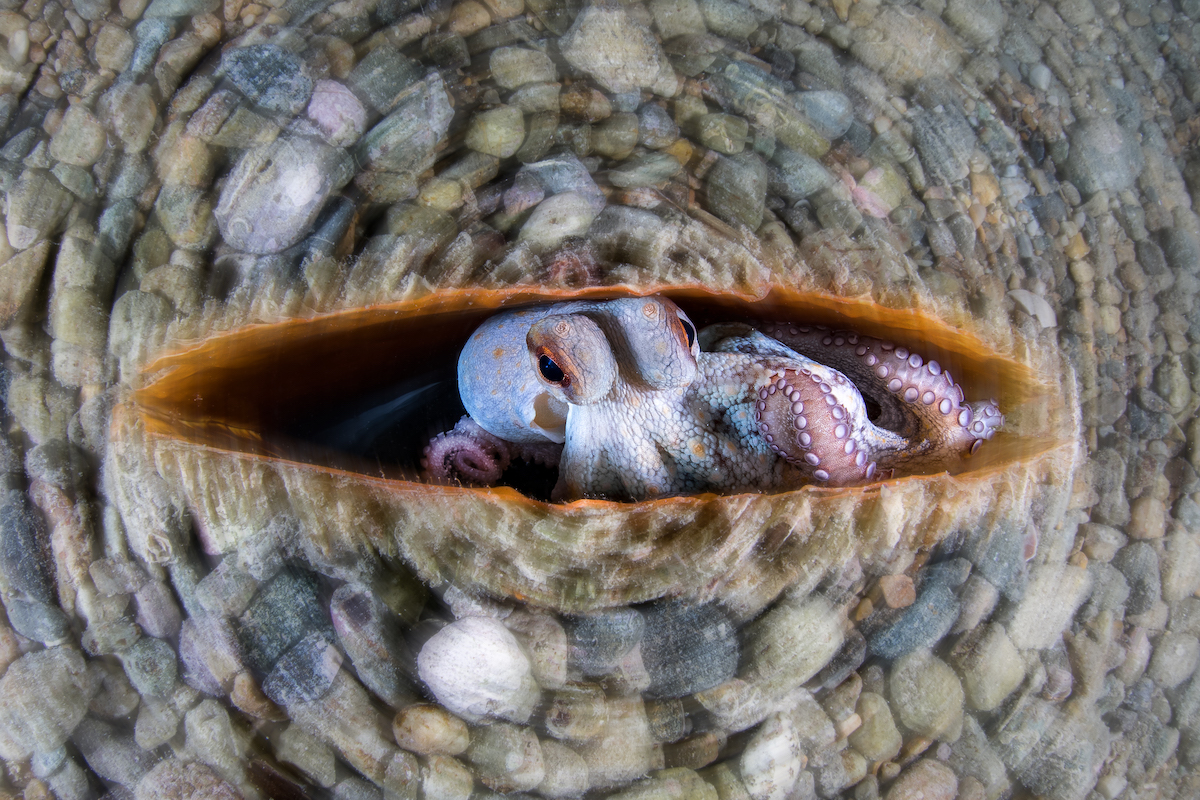
“Circular Octopus” by Alessandro Grasso (Italy). Underwater, Winner.
“In the past three years, the bacterium Mycobacterium sherrisii has caused the mass death of Pinna nobilis (Noble Pen Shell) throughout the Mediterranean Sea. Most of the empty shells of the large bivalve have been colonized by other marine species. In this case, an octopus takes advantage of the large shell to create its den and protect itself from predators. I used a slow shutter speed and circular panning motion to give dynamism to the image and emphasize the subject.”
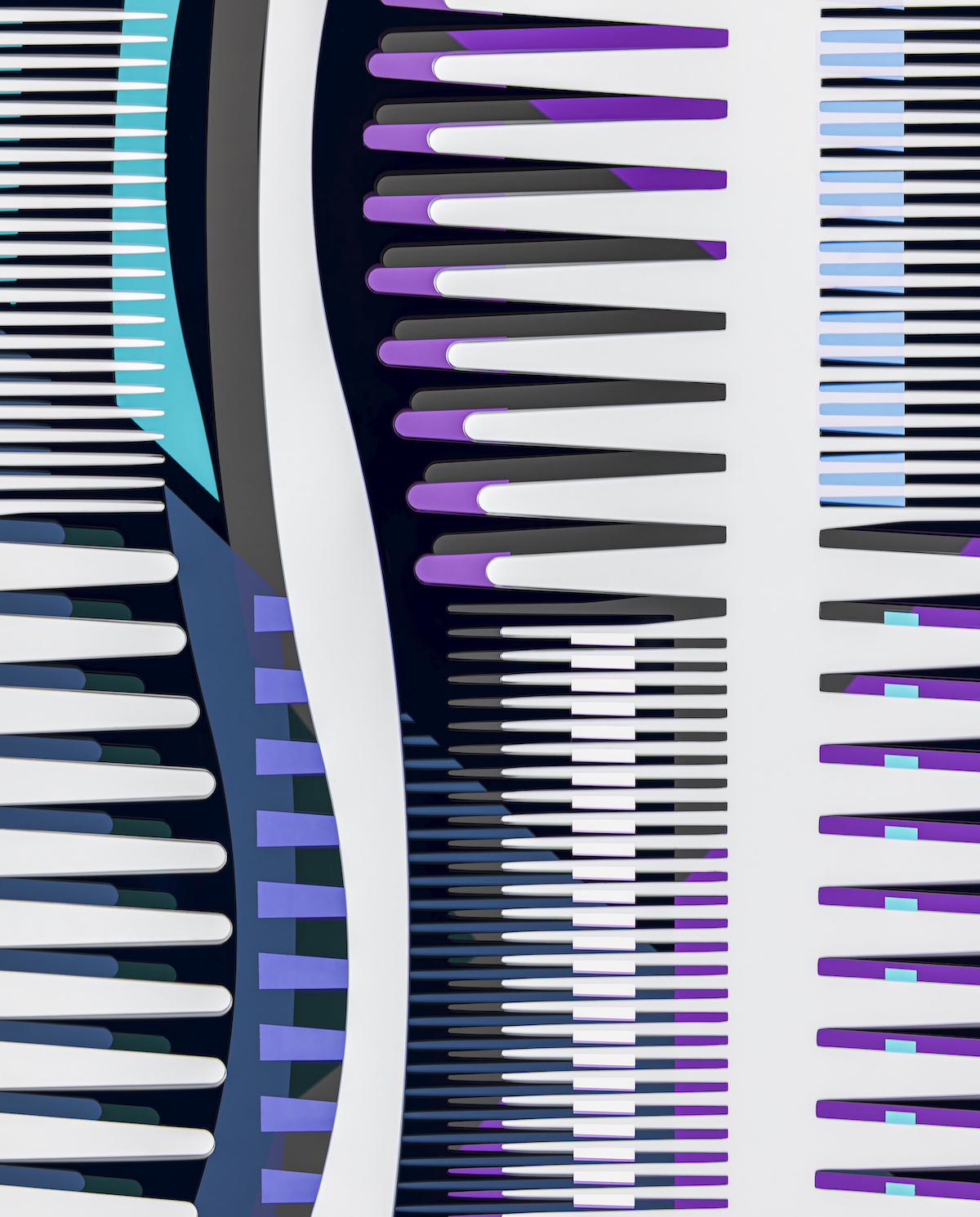
“Combs in Colour Silhouette” by Elizabeth Kazda (USA). Manmade, Third Place.
“I strive to invent new ways to photograph my subjects. For example, an ordinary comb is an object most of us take for granted. I wanted to photograph it in a way that would highlight the great lines of this everyday object.
I placed three combs on a light-pad with the camera in multiple exposure mode and photographed them in silhouette. Next, I moved the camera to another position and photographed the combs with color gels underneath. I repeated this eight times. Each exposure overlaps in different areas creating unique design patterns within the body of the silhouette. I used an in-camera multiple exposures of 10 frames.
I have been developing new techniques with in-camera multiple exposures for close-up/macro photography for the last two years.”
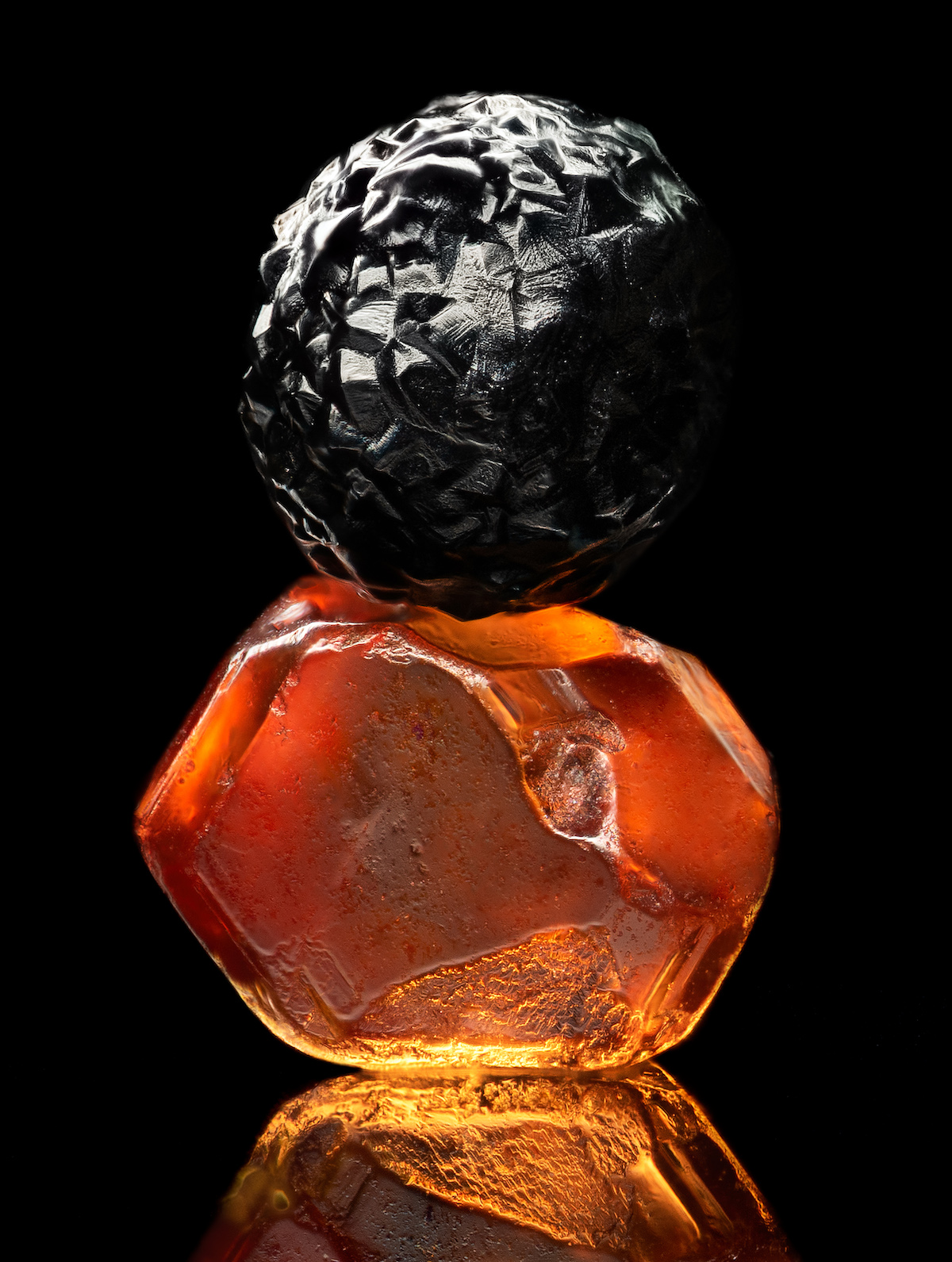
“Heaven and Earth” by Don Komarechka (Canada). Micro, Second Place.
“This is a micrometeorite positioned on top of an equally minuscule faceted garnet. These elements are smaller than most grains of sand, measuring 1/3 to 1/2 of a millimeter in diameter. Photographing subjects at this small scale requires hundreds of images in focus stacking efforts at high magnification. The lighting is also a challenge – achieving reflected light off the micrometeorite while seeing transmitted light through the garnet required significant experimentation.”

“Dancing in the Dark” by Juan J. González Ahumada (Spain). Animals, Winner.
“This opilione (harvestman or daddy longlegs) moves along a dry branch in a small hollow created by a landslip on the hillside of Sierra Blanca, Andalusia. These creatures are blind and use their front legs to guide themselves in the dark. With little space to move, I managed to light the subject from behind and used a 20-second exposure to capture the movement of its long legs.”
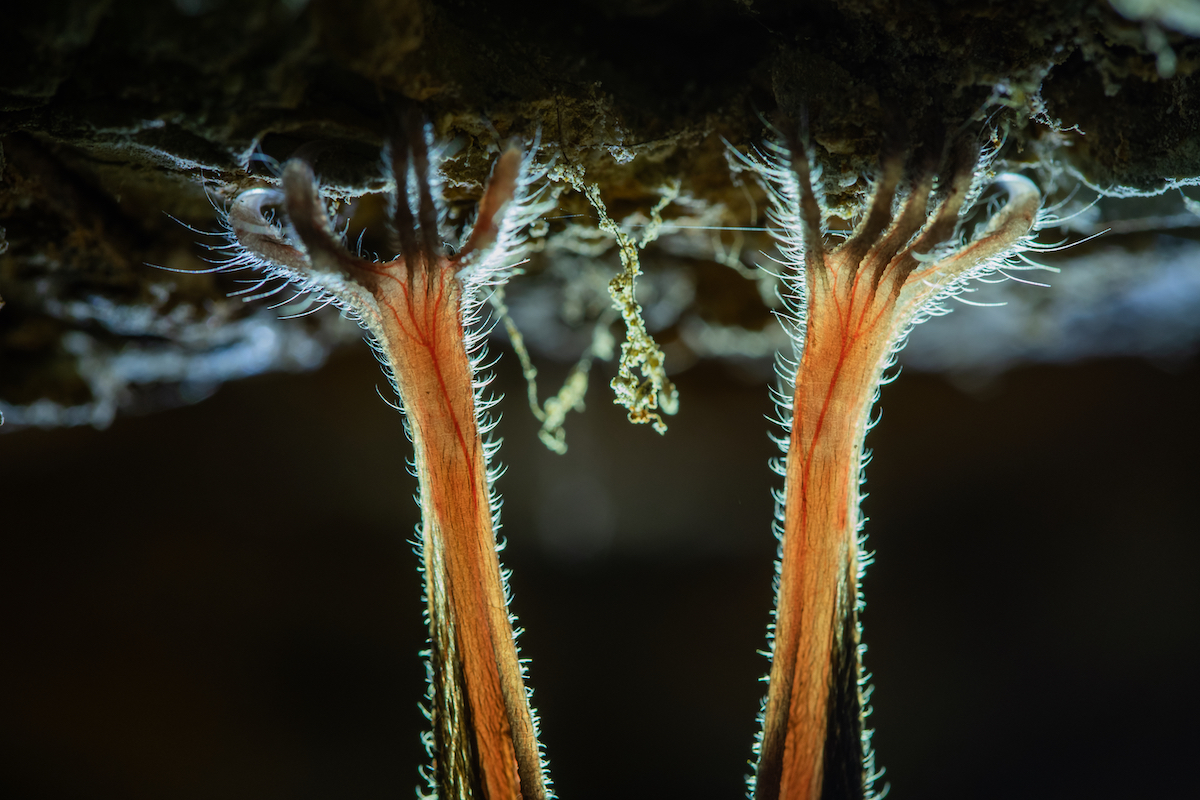
“Tiny Details” by Lili Sztrehárszki (Hungary). Animals, Third Place.
“I took my picture on the last day of winter in 2020, in an abandoned mine of Börzsöny Hills in Hungary. Although it’s permanently closed to visitors for the protection of its inhabitants, I was allowed to enter accompanied by a professional guide. The photo shows the lesser horseshoe bat (Rhinolophus hipposideros), whose body measures less than 5cm. Its population is decreasing throughout Europe and is a protected species.
Composing the picture in the silent darkness I only used a single flashlight with great care trying not to disturb the hibernating mammal. I attempted to frame the picture to highlight the delicate feet of the bat as it hung upside-down, clinging to the rock with its tiny fingers and claws, using special locking tendons. The backlight emphasizes the veins under the thin skin and the light hair on the tiny feet.”

“Colours Through Spider’s Eye” by Sudith Rodrigo, 16, (Sri Lanka). Young, Second Place.
“I shot this photo in my home garden during the Covid-19 lockdown that was imposed in Sri Lanka. Since there was nothing much to do or anywhere to go, I started to garden in my backyard and focused on my macro photography.
When I was planting one day, I saw a spider web in a winged bean plant. I ran into my house to grab my camera and tried to capture a photo. But it was not easy since the spider kept moving and it was hard to focus with the extension tube attached. I like the color combination of green, yellow and gold in this picture. The golden color is from the sunlight coming through a tiny hole in the plant leaf. I angled it slightly to bounce the light off the spider’s web.”
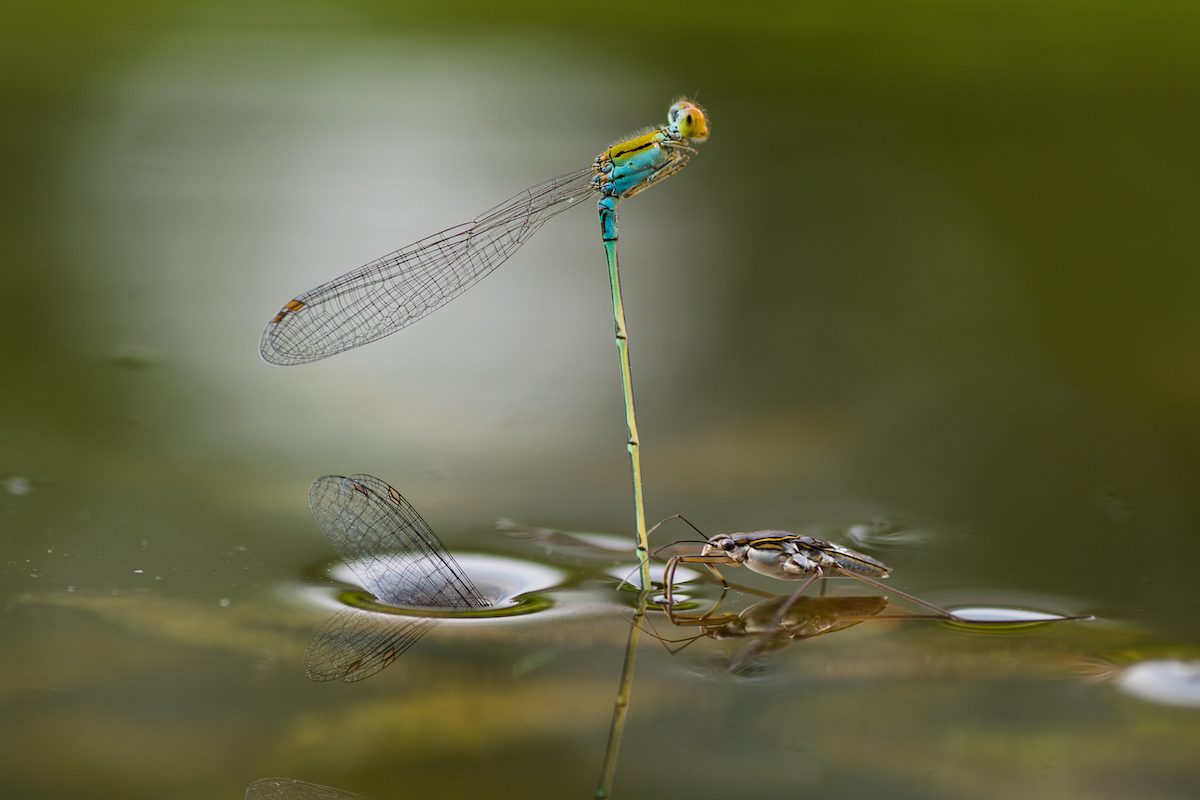
“Mating Underwater” by Ripan Biswas (India). Butterflies & Dragonflies, Winner.
“For some species of damselfly, egg-laying is a difficult task. They lay eggs on submerged vegetation so their eggs don’t get exposed to the air. The female climbs down deep in the water while the male clasps the neck of the female with a special organ on the tip of its tail. This is a difficult time for the pair as they become vulnerable to predators.
As I put my camera just above the water to start taking shots, a water strider came close to the pair in search of food. After inspecting the mating pair, he decided they would not make a good meal. I managed to take 2 or 3 shots before the water strider departed. The damselflies flew away after successfully laying their eggs.”
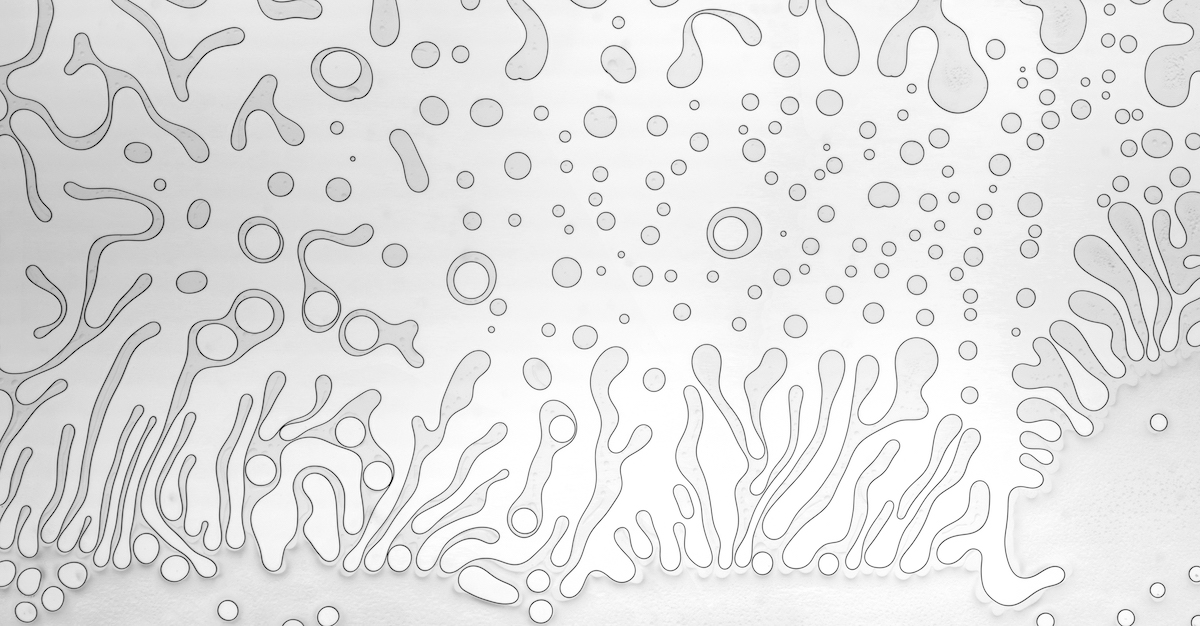
“Underwater World (Odd Air Bubbles Formed Under a Cover Slip)” by Marek Mis (Poland). Micro, Third Place.
“These odd air bubbles were created in a drying and crystalizing callus remover that has been smeared on a slide and covered with a cover slip. Callus remover is one of my favorite agents for taking micrographs. It can create unusual crystalline forms. This time I found on the slide these interesting air bubbles before the callus remover started to crystalize. The shapes and arrangement of the bubbles reminded me of underwater forms. I decided to create a small panorama as one frame wouldn’t do it justice. Three separate frames partially overlapping are stitched together in Photo Shop Elements 10.”
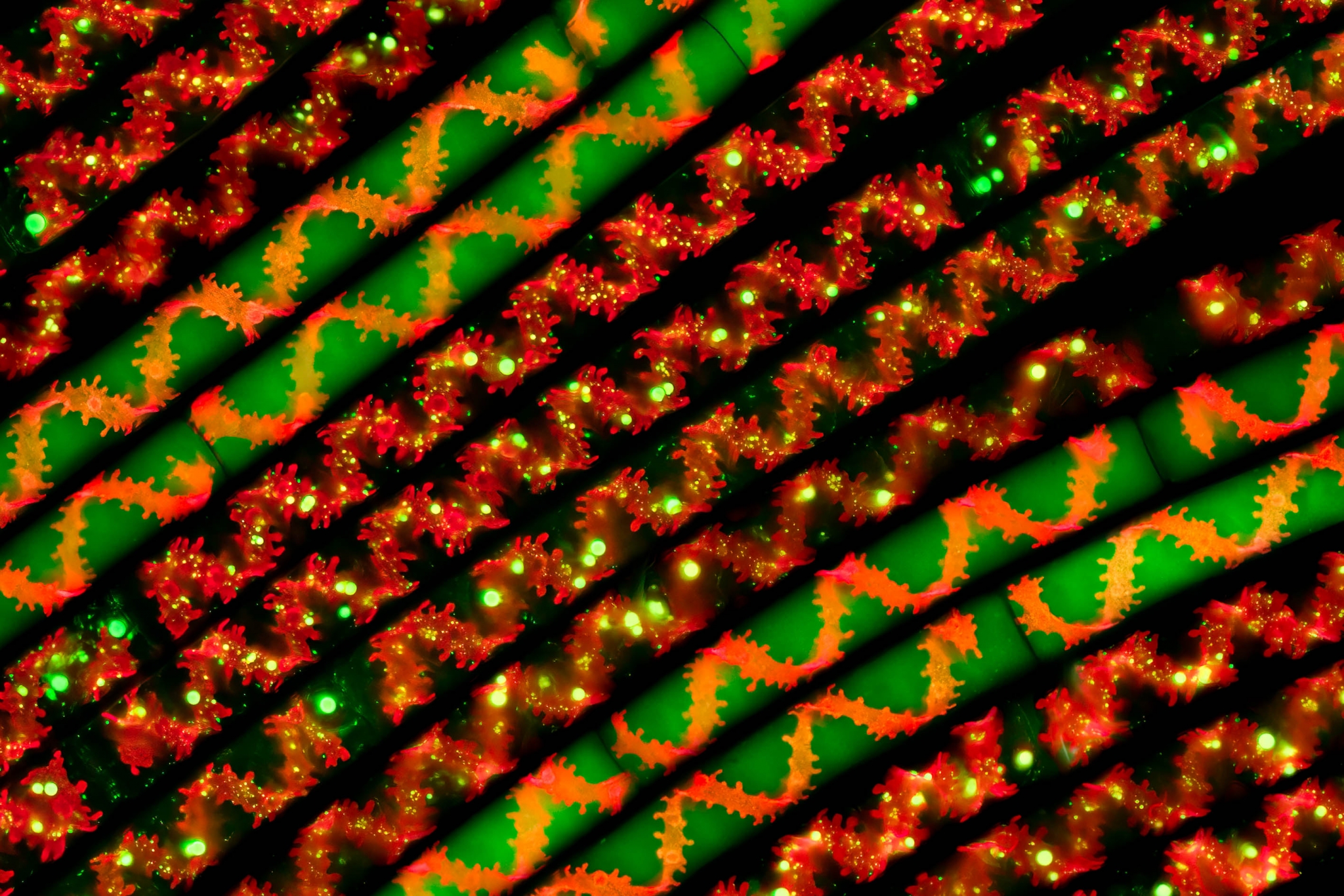
“Spiral Beauty” by Håkan Kvarnström (Sweden). Micro, Winner.
“This green algae Spirogyra has one of the most fascinating chloroplast shapes of all algae—a helical shape, or spiral. Spirogyras thrive in almost any freshwater environment and are a common species that is easy to find in shallow ponds, ditches, and lakes.
For this photograph, I stained some of the Spirogyra strands with a number of fluorescent dyes to highlight the spirally shaped chloroplasts. They were then mixed with natural strands and placed next to each other on a glass slide and photographed in fluorescent light.”
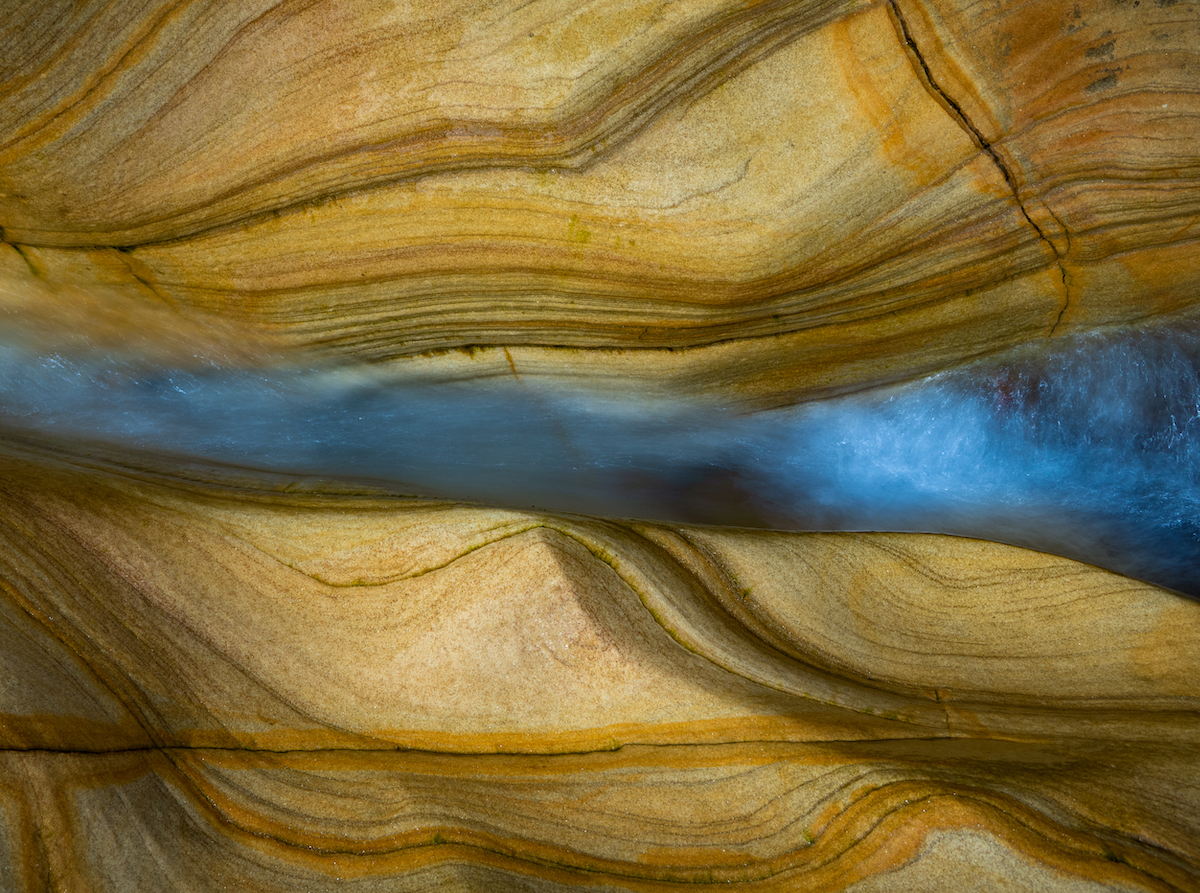
“Chasm” by David Southern (UK). Intimate Landscape, Second Place.
“This colorful coastal sandstone outcrop is located on the Northumbrian coast in the UK. Over time, erosion has resulted in the sedimentary layers of rocks being exposed to the elements. It is the indeterminate scale that I wanted to capture to create an intimate abstract landscape.
I waited for the tide to sweep through the narrow channel and used my compact camera to get the shot as the tripod had to be maneuvered in a very tight and awkward space.”

“The Birth” by Filippo Borghi (Italy). Underwater, Second Place.
“The result of this image comes from over three years of commitment in trying to capture the moment of birth of a Mediterranean catfish. During this long period I tried every year to follow the development of the eggs up to the final birth. Every year I arrived too early or too late, despite searching in different areas and depths around Giglio Island, Italy. Finally, my perseverance paid off and I captured this absolutely unique moment.”
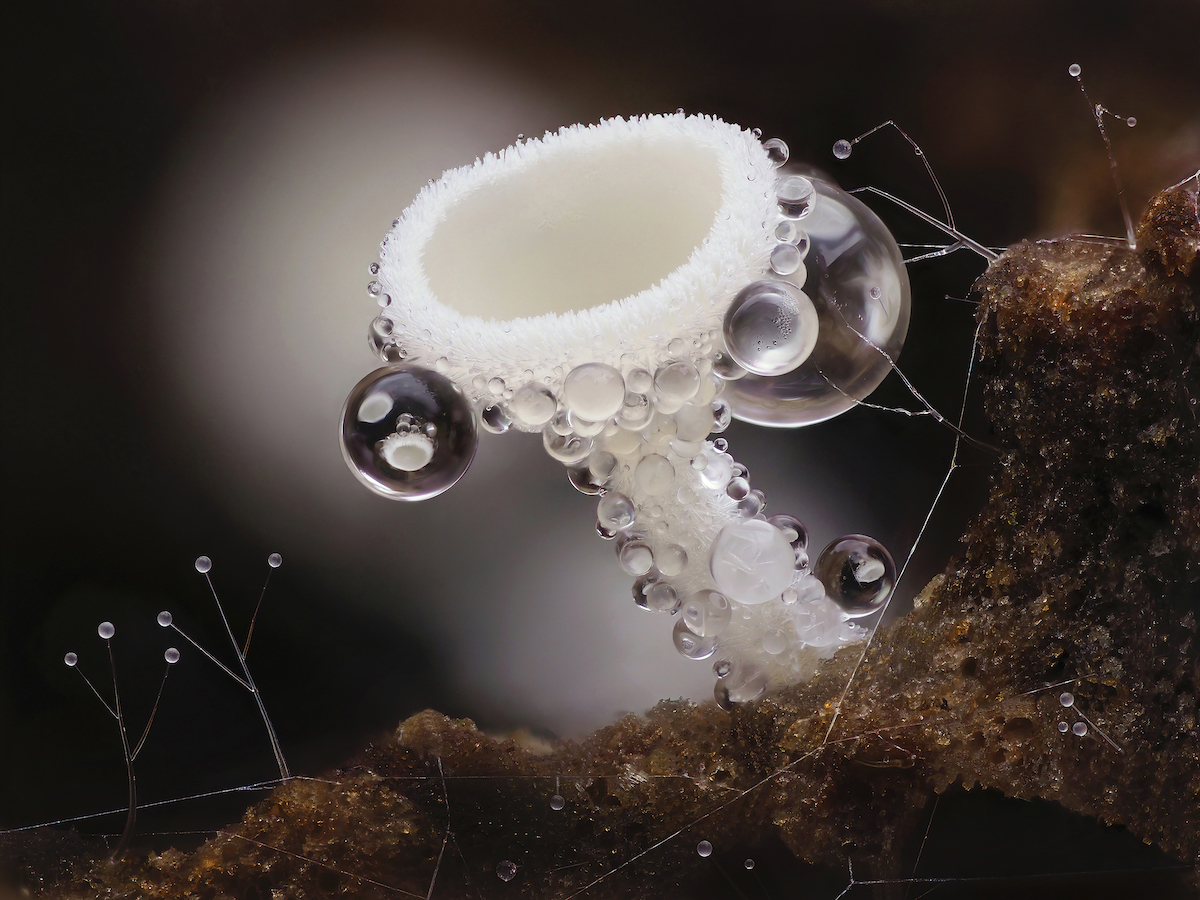
“Cup fungi Lachnum niveum” by Andy Sands (UK). Plants & Fungi, Second Place.
“I collected a small piece of rotting wood with several of these tiny cup fungi on and took them back to my studio. They are approx. 0.75mm tall and have tiny hairs that trap moisture, which adds to their beauty. Once collected I used an objective and tube lens assembly with focus rail to shoot multiple images for focus stacking. The depth of focus on the lens is tiny, so vibrations are a major issue with this sort of photography. This image is focus stacked from 127 images.”
